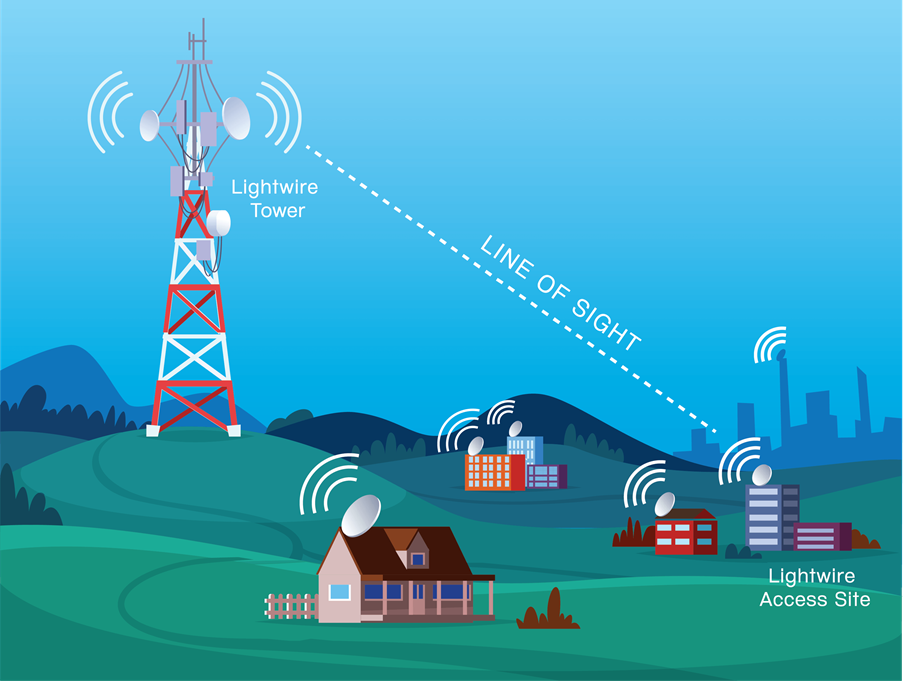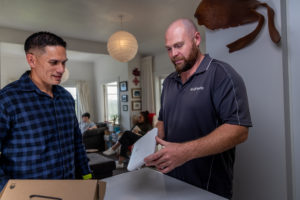Internet is internet right? Well, not quite, at least when it comes to the way you access the internet.
The way you access the internet will have a massive impact on the experience you have. Speed, uptime, and latency will all be determined to some degree by the type of last mile access you have in place.
“Last mile access” is the industry term used to describe the way your Internet Service Provider (ISP) connects your house to their network. This can be fibre, VDSL, fixed wireless (which is what Lightwire provides), 4G or 5G.
Today we are looking at the difference between 4G and fixed wireless, which are the two most common options available to rural locations in NZ.
What is 4G?
4G was the technology that replaced the old 3G standard and is the precursor to 5G. It is typically the type of connection your mobile phone has to the internet when you are outside of WiFi coverage. This service is provided by sending/receiving data in specific frequency bands from cell towers that are dotted around the countryside.
In the NZ rural scene 4G is used to provide Rural Broadband Initiative (RBI) services, which are what Spark, Vodafone and 2degree offer. If you have a service from one of these providers and live rurally, you are almost certain to be using 4G.
What is Fixed Wireless?
Fixed wireless connections are similar in that they operate by sending signals from a dish on a high site (or tower) on a nearby hill to the dish on the roof of your house. The frequency used is different, and a clear line of sight is required between the dish and high site for the service to operate.
As mentioned earlier, this is the technology we use at Lightwire. Below is a simple graphic to show how fixed wireless works.

What’s the difference?
While 4G technology is sound, it is also very expensive to deploy and the NZ rural market has found itself underserved by the RBI providers as a result. Many rural areas in NZ have been subject to stop sell orders, where a cell site, or sites, are so over utilised and congested that Spark/Vodafone have stopped selling any more services. This means that those already accessing the internet via those towers will also have a poor experience.
There are a number of technical details that represent differences between the service types, but from a usability point of view the biggest difference is that 4G can go through things such as walls, trees, etc. This means that 4G can be provided in areas that fixed wireless services can’t reach, as a tree blocking line of sight to the high site can be enough to result in a failed install.
Both services are capable of comfortably delivering speeds that will allow a household to stream HD content while using multiple devices to brows the internet, the limiting factor for 4G in rural areas is simply the way it has been deployed by the network operators. The lack of investment and resulting congestion has seen continued degradation of the end user experience on 4G for rural New Zealanders.


